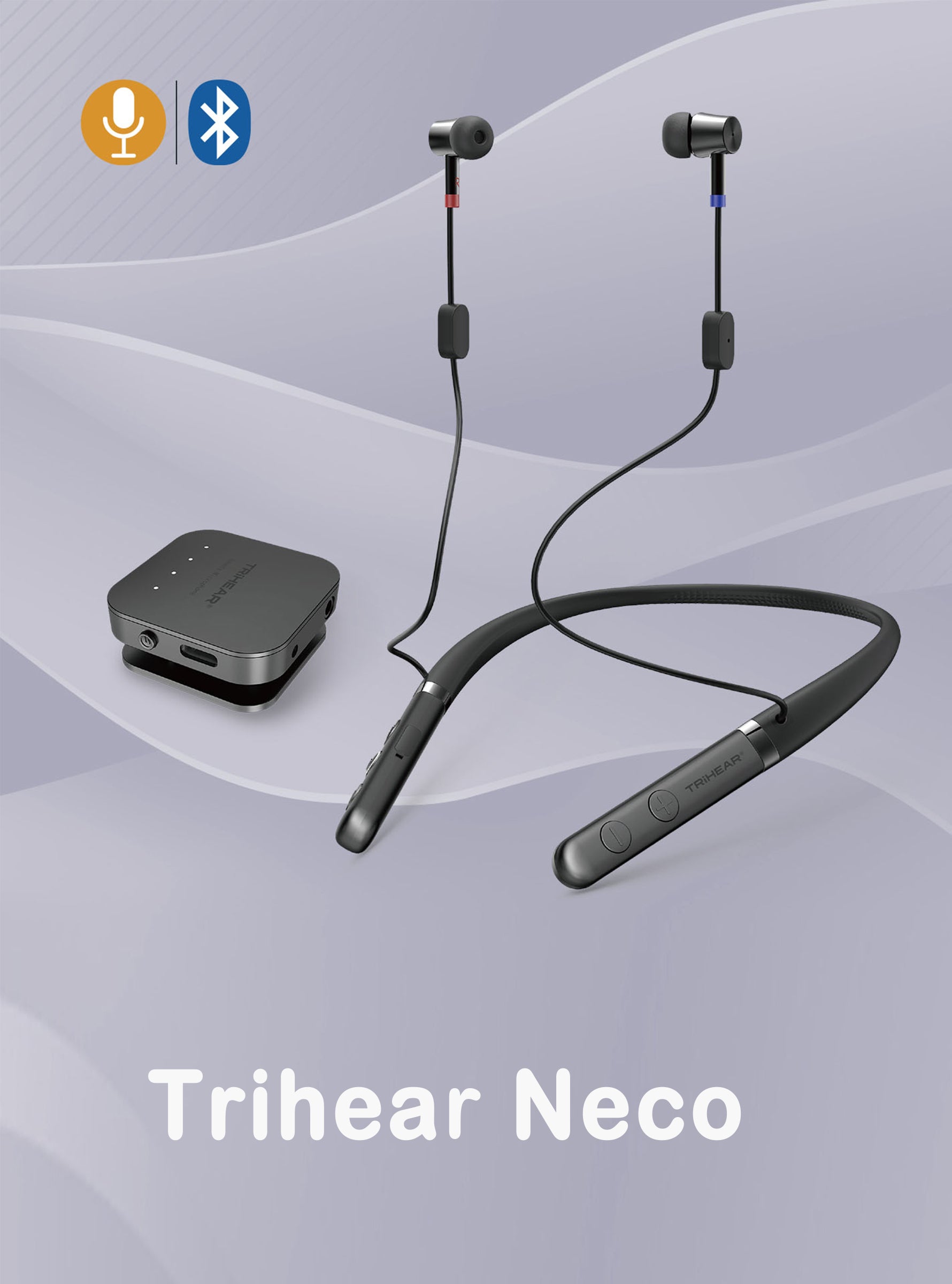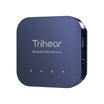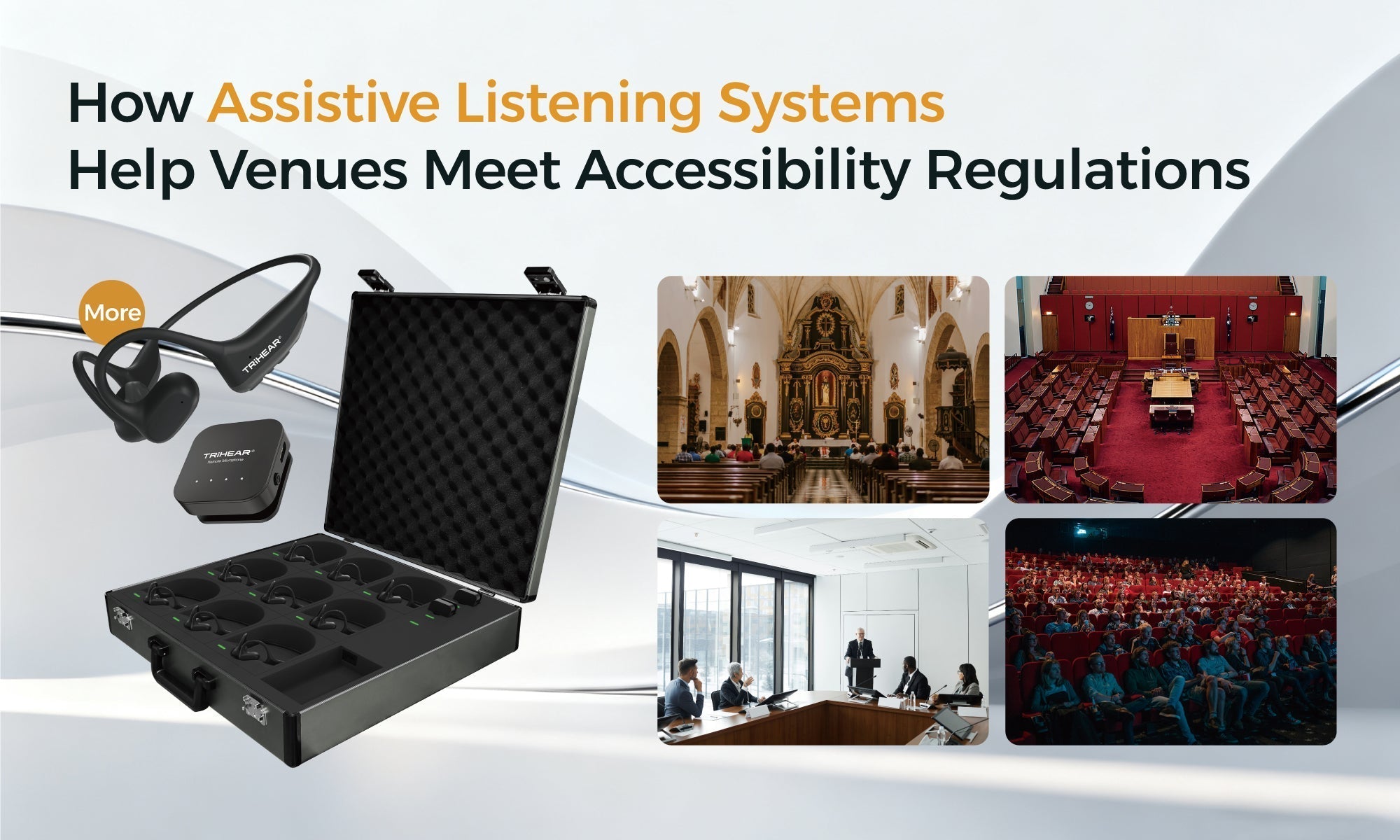In the rapidly advancing world of hearing solutions, Trihear is committed to bringing the latest innovations in Assistive Listening Devices (ALDs) and Assistive Listening Systems (ALSs) to individuals and public venues alike. These breakthrough technologies are revolutionizing how people with hearing challenges engage in their daily lives, offering better communication, increased accessibility, and a renewed sense of independence.
What Are Assistive Listening Devices and Systems?
Assistive Listening Devices (ALDs) and Assistive Listening Systems (ALSs) are specialized tools designed to amplify and clarify sound, making it easier for individuals with hearing impairments to engage in conversations, participate in group settings, and enjoy various entertainment and educational activities.
ALDs, such as Personal Sound Amplification Products (PSAPs) and hearing aids, are personal devices that can be customized to an individual's specific hearing needs. These devices work by amplifying sound and reducing background noise, allowing users to better hear and understand speech.
On the other hand, ALSs are larger, more comprehensive systems that are often used in public spaces, such as theaters, classrooms, and conference rooms. These systems typically consist of microphones, transmitters, and receivers, working together to deliver clear, amplified sound directly to the user's ears or hearing devices.
Key Types of Assistive Listening Devices
The world of ALDs offers a variety of solutions to fit individual hearing needs and preferences. Some common examples include:
Personal Sound Amplification Products (PSAPs)
PSAPs are affordable, over-the-counter devices that amplify sound, making them a popular choice for individuals with mild to moderate hearing loss. These devices are designed to be user-friendly and can be easily adjusted to suit individual preferences.
Hearing Aids
Hearing aids are the most well-known type of ALD, providing personalized amplification and sound processing to address various degrees of hearing loss. These devices are custom-fitted to the user's ear and can be programmed by a hearing healthcare professional to optimize their performance.
Cochlear Implants
Cochlear implants are a more advanced type of ALD, designed for individuals with severe to profound hearing loss. These devices bypass the damaged parts of the inner ear and directly stimulate the auditory nerve, enabling users to perceive sound and speech more clearly.
 Trihear Convo
Trihear Convo
Components of Assistive Listening Systems
Assistive Listening Systems (ALSs) like Trihear LiberMore are complex, multi-component systems that work together to deliver clear, amplified sound to users. The key components of an ALS include:
Common Assistive Listening Systems
There are several types of ALSs, each tailored for specific environments:
FM Systems
FM systems use radio frequency (RF) technology to transmit audio, making them ideal for large spaces like theaters and classrooms.
Infrared Systems
Infrared (IR) systems use invisible light waves to transmit sound, commonly used in settings where radio interference could be a concern, such as hospitals or courtrooms.
Induction Loop Systems
These systems create a magnetic field that connects directly with a user’s hearing aid or cochlear implant, providing a direct, interference-free audio experience.
 Trihear LiberMore
Trihear LiberMore
Benefits of ALDs and ALSs
ALDs and ALSs provide a wealth of benefits for individuals with hearing challenges, including:
- Enhanced Speech Comprehension: By amplifying and clarifying sounds, these technologies help users better understand conversations and reduce the frustration associated with hearing loss.
- Reduced Background Noise: Both ALDs and ALSs isolate desired audio signals, reducing interference from background sounds to create a focused listening environment.
- Improved Accessibility in Public Spaces: The availability of ALSs in venues like theaters, conference centers, and places of worship ensures that individuals with hearing impairments can fully participate and engage.
Choosing the Right ALD or ALS
Selecting the appropriate ALD or ALS is an important step in addressing hearing challenges. At Trihear, our team of hearing professionals works closely with each individual to understand their specific needs and preferences, ensuring the recommended solution provides the best possible support and enhancement.
The Future of Assistive Listening Technology
As technology continues to evolve, the landscape of Assistive Listening Devices and Systems is poised for even more exciting advancements. Trihear is at the forefront of these innovations, exploring the integration of smart devices and the integration of artificial intelligence to further improve the user experience and accessibility for individuals with hearing impairments.
Assistive Listening Devices and Systems are transformative tools that empower individuals with hearing challenges to navigate their daily lives with greater ease, confidence, and independence. At Trihear, we are committed to providing our clients with the most advanced and personalized hearing solutions, ensuring that they can fully engage with the world around them. By embracing the power of these innovative technologies, we are paving the way for a more inclusive and accessible future.
















